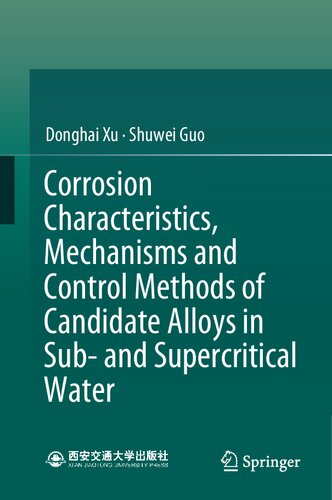

Most ebook files are in PDF format, so you can easily read them using various software such as Foxit Reader or directly on the Google Chrome browser.
Some ebook files are released by publishers in other formats such as .awz, .mobi, .epub, .fb2, etc. You may need to install specific software to read these formats on mobile/PC, such as Calibre.
Please read the tutorial at this link: https://ebookbell.com/faq
We offer FREE conversion to the popular formats you request; however, this may take some time. Therefore, right after payment, please email us, and we will try to provide the service as quickly as possible.
For some exceptional file formats or broken links (if any), please refrain from opening any disputes. Instead, email us first, and we will try to assist within a maximum of 6 hours.
EbookBell Team

0.0
0 reviewsThis book aims to provide comprehensive and systematic introduction and summary of corrosion characteristics, mechanisms, and control methods of candidate alloys in sub- and supercritical water environment. First of all, corrosion types of candidate alloys and the effects of major alloying elements on corrosion resistance of potential alloys in sub- and supercritical water are compared and analyzed. At the same time, research status of candidate materials, and development and application trends of several corrosion-resistant alloys are summarized. Then, corrosion characteristics of Ni-Cr, Ni-Cr-Mo, Ni-Fe-Cr and Ni-Fe-Cr-Mo-Cu corrosion-resistant alloys, FeCrAl alloy, and Zircaloy are discussed in detail, including the corrosion rate, the structure and composition of oxide film, and the effects of various surface treatment processes, etc. More specifically, it also investigates corrosion behavior of Ni-based alloy, Fe-Ni-based, and stainless steels in supercritical water. The effects of aggressive species on the corrosion behavior of Ni-base alloys are also explored in supercritical water. Readers will further discover the total corrosion processes and mechanisms of typical candidate alloys in sub- and supercritical water environment. Finally, the work explores the corrosion control methods such as ceramic coatings and passivation processes in supercritical water oxidation and in subcritical water, respectively. Future challenges and development trends of corrosion research of candidate materials in sub- and supercritical water environments are covered at the end of this book. It offers valuable reference for theoretically guiding material selection and design and operating parameter optimization of key equipment in the sub- and supercritical water technologies. The book is written for senior undergraduates, graduate students, scholars, and researchers who are interested in corrosion behavior of candidate materials of supercritical water oxidation system, supercritical water gasification system, and nuclear reactor.